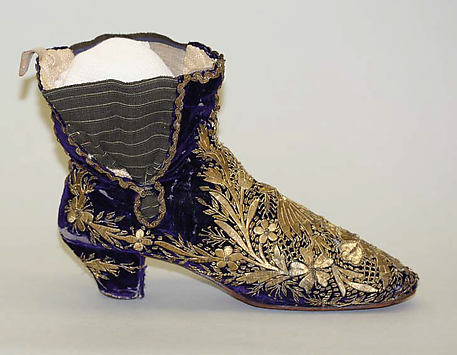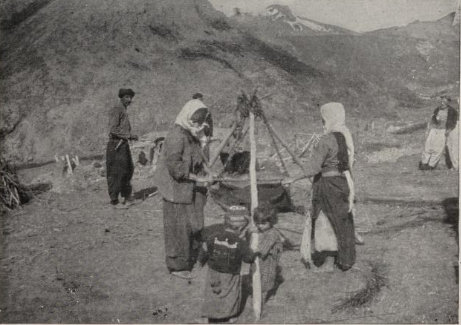Note: This article has been excerpted from a larger work in the public domain and shared here due to its historical value. It may contain outdated ideas and language that do not reflect TOTA’s opinions and beliefs.
“Native Industries” from When I Was a Boy in Armenia, by Manoog Der Alexanian, 1926.
Armenia was once one of the earliest centers of world civilization, learning, commerce, and wealth, and at the close of the sixth century, exceedingly wealthy and prosperous. Great centers of population and commerce existed in Armenia, and the fame of its cities and products had spread over the then known world. Its decay began with the invasions of the Persians, and was hastened by those of the Arabs. What the Persians and Arabs began, the Seljuks and Ottoman Turks completed. From that time on, the economic and industrial condition of Armenia has steadily become worse. The great industrial centers no longer exist; commerce languished and finally almost expired. Agriculture has also greatly suffered from the disappearance of the Armenian peasants from the soil.
To-day there are few native industries, few handicrafts, and even these are confined to very humble limits.
In the following pages I shall endeavor to give all the Armenian industries I have seen as a boy in my home town:
Rug-Making
Rug-making is the most prosperous of the Armenian industries, because there is a great demand in Europe and America for the beautiful rugs made by Armenians. The rugs made in individual looms are woven by hand, very tedious work. The worker is obliged to make a loop and a knot each time he proceeds. It takes from one to six months or a year for one man to make a good rug. Some rugs take two years for completion. But these rugs are well made, and last for generations without much fading or signs of wear. The more worn they are, the more valuable they become.
Silk
The silk industry is second in importance. The work of raising the cocoon and the worm is all done under one roof. There are large tracts of land planted with mulberry-trees upon whose leaves feed the silkworms. I have visited many silkworm nurseries, and found it very interesting and instructive to watch the silkworms feed on the mulberry-tree leaves and spin their cocoons around themselves. When you watch two or three thousand silkworms feeding, you will hear a weird music made by the rasping of their mouths.
Looms
In our city we had two factories engaged in making plain lining for clothes. The clothes that we wore were generally made by men who had looms in their houses. These men bought their own material, made clothes, and sold the garments directly to the merchants. We have no machinery for separating the cotton from the cone; it is all separated by hand.
Dye-Houses
These are one-story mud-brick buildings. If you visit the inside of a dye-house, you will see many large earthen tanks in a row, each set upon a small fireplace. Each tank contains a different color. The dyer takes the plain cloth and dips it into that tank filled with boiling dye; after the cloth is thoroughly soaked with the color, it is taken out, wrung, and spread on the ground outside the house to dry. Very amusing is it to see red, blue, yellow, and green dyed clothes spread on the ground side by side. The dyer’s hands bear all the colors of the rainbow; even his finger nails are decorated. The color never comes out; he eats with stained hands, and dyes with stained hands. Hence the dyer is always to be distinguished by his hands; in fact all artisans may be distinguished by their hands.
Shoemaking
There are no shoe factories in Armenia. An entire street in my city was devoted to shoemakers and cobblers. They work in one-story shops which open directly on the street. All shoes are made by hand. There are no shoe stores; if you want to buy shoes, you have to go to the shoemaker and have them made to order. Besides the regular shoes, we have another kind which is made entirely of soft leather, called yemeni, with a tail in the back. It is very interesting to watch the shoemaker and especially the bootmaker work at his bench sewing, nailing, and taking the shoes out of their lasts. Our boots are larger and reach to our knees. I have seen bootmakers take hold of the top of the boot between their teeth and push the last out with their hands. Instead of iron stands, the Armenian shoemaker, when nailing the sole on the shoe, saddles the shoe on his knee, and, with a piece of leather strap tied to his foot, he holds the shoe firm while pounding it with a hammer.
Goldsmithing
Goldsmiths occupy an entire street by themselves, and work diligently on jewelry and watches. They are very skilful in their trade, and can engrave on gold, silver, bronze, and wood; some of their work Europeans consider very beautiful art.
Dry-Goods Merchants
These tradesmen occupy a particular street. It is very amusing to see them in their stores on a busy day, measuring cloth with their yardsticks; they are very fast and clever with the yardstick. The prices are not marked on goods for sale; hence there is a great deal of haggling, and a great deal of time and effort lost in making the sale.
Ironsmiths
These, also, occupy a street of their own. Of all the artisans, they are the earliest to rise and begin work. Quite often have I been awakened by the music of their hammer and anvil. I always loved to hear that ding-dong, ding-dong piercing the clear quiet of the morning. When I was a boy I was very much impressed by them, and often watched them at work, trying to catch the flying sparks from the red-hot iron. I liked to fancy these iron- smiths as Olympian gods making iron chains for their captives.
Blacksmiths
These are on another street. They make their own nails and iron shoes. The horses ready to be shod stand in a row on the outside of the shop. The shoeing is done in the following manner: The apprentice throws a rope around the ankle of the foot to be shod, lifts it up, and holds it in place against his loins while the master puts on the shoe. The blacksmith’s trade is a very hazardous one in Armenia; many men have received deadly kicks from the horses, and others have been disabled for life.
Dairies
There are no scientific dairies in Armenia. Milk, cream, cheese, and butter are prepared on the farm by the Armenian peasants and brought to the city on market days, where they are sold to the people. Then, with his money in his pocket, the peasant farmer buys agricultural necessities and returns to his farm.
Wool and Cotton
The preparation of wool and the raising of cotton are done by hand.
Seeds and Cereals
A great part of this industry is carried on in different centers of Armenia, and oil extracted from the seeds.
Alexanian, Manoog Der. When I Was a Boy in Armenia. Lothrop, Lee & Shepard Co.
About TOTA
TOTA.world provides cultural information and sharing across the world to help you explore your Family’s Cultural History and create deep connections with the lives and cultures of your ancestors.



